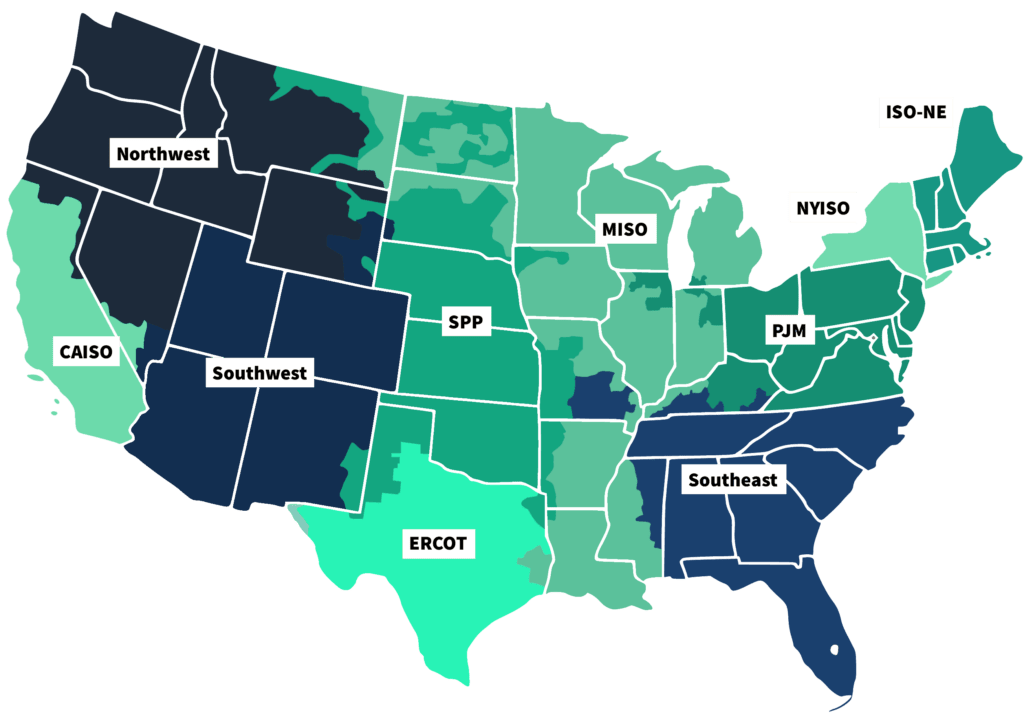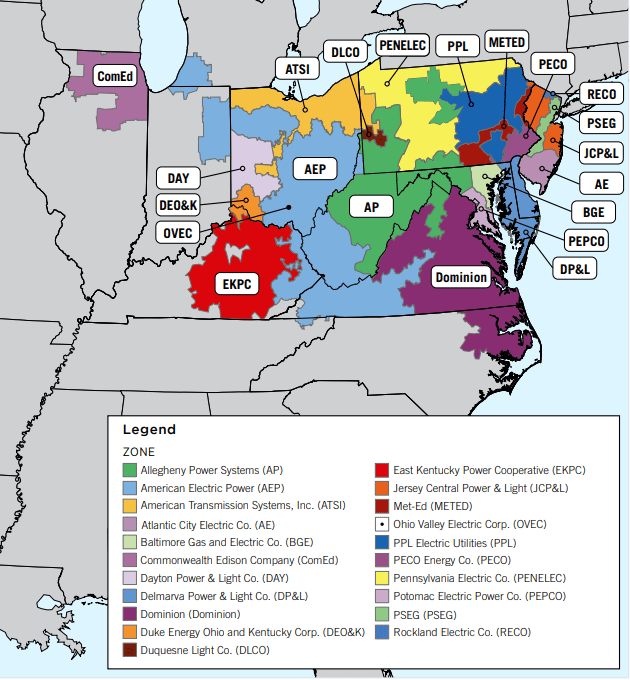In the U.S., seven Regional Transmission Organizations (RTOs) and Independent System Operators (ISOs) are responsible for running the high voltage electric transmission grid in North America and Canada. With a territory that spans all or parts of 13 states and the District of Columbia, PJM is among the largest of these organizations.
You’ve no doubt heard the PJM acronym, but do you know what PJM stands for and what it does? Read on to learn more about PJM’s meaning and why it’s a key player in the U.S. energy market.
ISO/RTO Documentation Chatbot
Use our AI to search Business Practice Manuals from ISO/RTO markets at no cost.
What does PJM stand for?

In 1927, three utilities in New Jersey and Pennsylvania formed an integrated power pool to maximize the benefits and efficiencies that come from sharing generating resources via interconnected high voltage power lines.
In 1956, additional utilities in Pennsylvania and New Jersey, as well as utilities in Maryland, joined the power pool and PJM (PJM stands for Pennsylvania-New Jersey-Maryland) was born.
Today, PJM has evolved into a regional transmission organization (RTO), and it includes more than 1,100 member utilities serving more than 65 million people. An independent nonprofit organization, PJM territory spans nearly 369,000 square miles and includes all or parts of Delaware, Illinois, Indiana, Kentucky, Michigan, North Carolina, Ohio, Tennessee, Virginia, West Virginia, the District of Columbia, and of course, Pennsylvania, New Jersey, and Maryland (see PJM zones map below).
PJM zones map. Source: PJM
Headquartered northwest of Philadelphia in Valley Forge, Pennsylvania, the PJM market has over 183,000 megawatts of generation capacity and 88,000 miles of transmission lines.
What does PJM do?
As noted above, PJM is a regional transmission organization. Per its mandate from the Federal Energy Regulatory Commission (FERC), the government regulatory agency that oversees the country’s electricity transmission, PJM is a nonprofit entity that does not sell electricity to end users, nor does it own any equipment such as generators or power lines. Rather, PJM is responsible for the safety, reliability, and security of the bulk power transmission system in its footprint.
Wholesale electricity market
Like other ISO/RTOs, PJM carries out its mission in a number of ways. First, it coordinates the movement of electricity across its service territory with the management of a wholesale electricity market. PJM offers both a day-ahead and real-time energy market energy market.
Read our blog post, “Day Ahead vs. Real-Time Market: What’s the Difference?”
As the market coordinator, PJM is responsible for balancing the needs and equitable access of all market participants, as well as ensuring the reliability of the grid at the lowest cost possible.
Capacity market
In addition to its wholesale market, PJM runs a capacity market that takes a longer-term view on electricity supply and demand. Each year, PJM holds an auction to secure enough power to meet the peak demand it expects to see in three years.
Read the PCI blog post, “PJM Capacity Market Explained.”
Ancillary services market
The final market that PJM oversees is an ancillary services market, which helps to balance the grid through regulation and reserves markets. The regulation market manages short-term supply and demand shortfalls, while the reserves market includes generation resources that can be quickly brought online in case of an unexpected generator outage.
In summary, PJM is a keystone entity that oversees critical electricity markets and operations across 13 states and D.C. With PJM’s integral role, in-depth knowledge of its complex systems is invaluable for market participants.
Learn more in our blog post, “What Are Ancillary Services in Energy?”
Optimize your PJM market participation
PCI Energy Solutions provides optimized tools to help manage your organization’s participation across PJM’s wholesale, capacity, and ancillary service markets. Discover how our superior analytics and timely insights can drive your profitability and operational efficiency.








